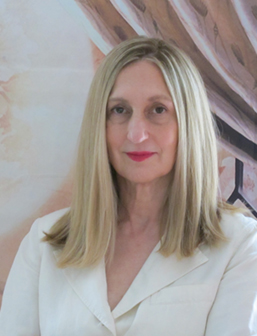|
|
John W. DowerJohn W. Dower is a Professor Emeritus at the Massachusetts Institute of Technology and co-founder, in 2002, of the MIT Visualizing Cultures project, a website that breaks new ground in the scholarly use of visual materials to reexamine the experience of Japan and China in the modern world. As of 2014, eleven of the presentations on this multi-unit site were authored by him. Dower’s 1999 book Embracing Defeat: Japan in the Wake of World War II won the U.S. National Book Award for Nonfiction, the Pulitzer Prize for General Nonfiction, the Bancroft Prize, the Los Angeles Times Book Prize, the Mark Lynton History Prize, and the John K. Fairbank Prize of the American Historical Association. Dower earned a bachelor's degree in American Studies from Amherst College in 1959, and a Ph.D. in History and Far Eastern Languages from Harvard University in 1972. His many other publications include a study of mutual images during World War II entitled War Without Mercy: Race and Power in the Pacific War. Dower was the executive producer of the Academy Award-nominated documentary Hellfire: A Journey from Hiroshima. He has taught at the University of Wisconsin–Madison and the University of California-San Diego. He has been a fellow of the American Academy of Arts and Sciences since 1991, and was honored with the American Historical Association's "Award for Scholarly Distinction" in 2013. |
 |
James T. UlakJames T. Ulak is the President, United States – Japan Foundation, and former long-time Senior Curator of Japanese Art, Freer-Sackler Gallery, Smithsonian Institution. A specialist in the history of narrative painting production in fourteenth- and fifteenth-century Japan, James Ulak received his PhD from Case Western Reserve University (Cleveland, Ohio) in 1994. In 1995, Ulak joined the staff of Freer|Sackler as curator of Japanese art (1995–2003). He has also held the positions of head of collections and research and chief curator (2002–3) and deputy director (2003–10). In addition to his interest in medieval Japanese narrative painting, Ulak has written on eighteenth-century “eccentric” painters and on Japan’s artistic encounters with modernity in the late nineteenth and early twentieth centuries. He has developed and produced numerous exhibitions, often in conjunction with Japan’s Agency for Cultural Affairs. Recent examples include Masters of Mercy: The Buddha’s Amazing Disciples (2012); Kiyochika: Master of the Night (2014); and in partnership with the Japan Foundation, Sōtatsu: Making Waves (2015–16). |
 |
Hiromu NagaharaHiromu Nagahara is Associate Professor of History at the Massachusetts Institute of Technology. Nagahara studies the history of modern Japan, with a focus on the politics of art and culture since the nineteenth century. He is the author of Tokyo Boogie-Woogie: Japan's Pop Era and Its Discontents (Harvard University Press, 2017), which highlights the public controversies that engulfed the popular songs that were produced by Japan's music industry since the late 1920s and their connections to Japan's emergence as a mass-consumer, middle-class society. His current research project explores the cultural history of modern Japanese diplomacy by looking at how artistic and other pursuits of 'play' enable members of Japan's ruling elite to join larger networks of global elites in cities like London, Paris, and Shanghai during the decades preceding World War II. He is currently a Visiting Fellow at Wellesley College's Newhouse Center for the Humanities. |
 |
Ellen SebringEllen Sebring, artist, designer, and media researcher, has been the Creative Director of the Visualizing Cultures (VC) project at the Massachusetts Institute of Technology since the project’s founding in 2002, and has contributed essays on the visual culture of the Boxer Uprising in China in 1900. Her first book, Centerbook: The Center for Advanced Visual Studies and the Evolution of Art-Science-Technology at MIT, was released fall 2019 (SA+P Press and ZKM Karlsruhe, distributed by MIT Press). Sebring was a Fellow at MIT’s Center for Advanced Visual Studies (CAVS) for six years, and Post-Doctoral Associate at Duke University. She earned the PhD at the Centre for Advanced Inquiry in the Integrative Arts (CAiiA), Plymouth University in the UK, and the Master of Science in Visual Studies (SMVisS) at MIT. She was Lead Content Developer for all three of Visualizing Cultures' MITx online courses: the award-winning Visualizing Japan (1850s-1930s): Westernization, Protest, Modernity (VJx); and also as instructor in both Visualizing Imperialism and the Philippines (VPx), and this course, Visualizing the Birth of Modern Tokyo (VTx), for which she wrote the online content. Sebring’s research in “visual narrative” asks how history transforms in a digital/visual age, and investigates the syntax of images as new grammatical elements emerging from the mass digitization of archives opening a global portal to the past. |
 |
Shigeru Miyagawa (Introduction)Professor Miyagawa provides a brief opening introduction to the course. Miyagawa is Senior Associate Dean for Open Learning at MIT. He was on the original MIT committee that proposed OpenCourseWare, and was the Chair of the MIT OpenCourseWare Faculty Advisory Committee, 2010 - 2013. He co-founded and co-directs the Visualizing Cultures project with historian, John W. Dower. With John Dower, Andrew Gordon of Harvard, and Gennifer Weisenfeld of Duke, he created Visualizing Japan (VJx), a Harvard-MIT MOOC offered by edX that has has attracted over 15,000 learners world-wide. Visualizing Japan was a Finalist for the prestigious Japan Prize in 2015. He is also Executive Producer of the multimedia program, StarFestival, which stars George Takei as the voice of the main character. StarFestival was awarded the Distinguished Award at the Multimedia Grandprix 2000 (Japan). Between February 2014 and February 2019, he served as Project Professor and Director of Online Education for the University of Tokyo as a joint appointment with MIT. As a professor of linguistics, he has published several books, including two recent ones from the MIT Press, and over sixty articles. He has recently developed a theory of language evolution that hypothesizes that human language arose from the integration of two pre-existing systems in nature, one seen in birdsong, the other in primate alarm calls. For his work in technology and education, he has been recognized with the Irwin Sizer Award For the Most Significant Improvement to MIT Education, and “Shapers of the Future” by the educational technology magazine Converge. In linguistics, he is the author of Case, Argument Structure, and Word Order, Leading Linguists Series (Routledge, 2012), Why Agree? Why Move? Unifying Agreement-based and Discourse Configurational Languages, published by MIT Press (2010), and co-editor of Oxford Handbook of Japanese Linguistics published by the Oxford University Press (2008), along with over fifty articles on various linguistics topics. He received his B.A. from the International Christian University in 1975 and his Ph.D. from the University of Arizona in 1980. |
Course Team:
Ellen Sebring was the Lead Content Developer for VTx, and wrote the online course structure and content. The script was developed in collaboration with John W. Dower.
Sylvia Morrison was the Video Producer for VTx. She is an independent video producer and editor specializing in educational content. Her company, Mystic River Video, produced rare documentations of the work of the famous Yoga master, B.K.S. Iyengar, including his 75th birthday celebration in India. Morrison also carries on a family tradition, distributing a unique collection of popular classic train films produced by her father for their company, Sunday River Productions.
Andrew Burstein was the interactive designer/coder for VTx. Burstein became a member of the MIT Visualizing Cultures team in 2003. As well, he has produced, with many others, multimedia content for consumer products, industry trade shows, and corporate gatherings.
Emma Rose provided additional video editing and image research. She is a graduate of Barnard College, and works in video production in New York City.
Julieta Cristina Aguilera-Rodríguez and Josh Widdicombe each visited and provided on site photographs of the exhibition "One Hundred Views of Tokyo: Message to the 21st Century" exhibition, Art Institute of Chicago, September 21 - December 8, 2019, for use in the Conclusion of VTx.
Additional support was provided by MITx administrative and technical teams.
This ”Visualizing the Birth of Modern Tokyo“ MOOC builds on the MIT Visualizing Cultures project, which received generous funding from the Andrew W. Mellon Foundation, Henry Luce Foundation, the Getty Foundation, Japan Foundation's Council for Global Partnership, National Endowment for the Humanities, and MIT's d'Arbeloff Fund for Innovation in Undergraduate Education and MIT Microsoft-funded iCampus project.
Image Credits:
Whereas many of the images themselves are licensed under the CC BY NC SA license, the other course content and materials remain subject to the Edx Terms of Service.
Arthur M. Sackler Gallery, Smithsonian Institution
http://www.asia.si.edu
Carnegie Museum of Art
Honolulu Academy of Arts
http://www.honoluluacademy.org
Hood Museum of Art, Dartmouth College
http://hoodmuseum.dartmouth.edu
Museum of Fine Arts, Boston
http://www.mfa.org
Peabody Essex Museum
http://pem.org/homepage/index.php
Ryosenji Treasure Museum
http://www.izu.co.jp/~ryosenji/eigo.html
Shiseido Corporation
http://www.shiseidogroup.com/
Smith College Museum of Art
http://www.smith.edu/artmuseum/index.htm

